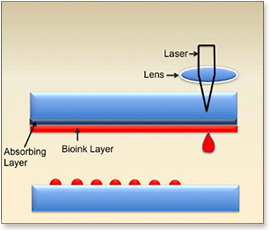

Alternative strategies that overcome existing organ transplantation methods are of increasing importance because of ongoing demands and lack of adequate organ donors. Recent improvements in tissue engineering techniques offer improved solutions to this problem and will influence engineering and medicinal applications. Tissue engineering employs the synergy of cells, growth factors and scaffolds besides others with the aim to mimic the native extracellular matrix for tissue regeneration. Three-dimensional (3D) bioprinting has been explored to create organs for transplantation, medical implants, prosthetics, in vitro models and 3D tissue models for drug testing. In addition, it is emerging as a powerful technology to provide patients with severe disease conditions with personalized treatments. Challenges in tissue engineering include the development of 3D scaffolds that closely resemble native tissues. In this review, existing printing methods such as extrusion-based, robotic dispensing, cellular inkjet, laser-assisted printing and integrated tissue organ printing (ITOP) are examined. Also, natural and synthetic polymers and their blends as well as peptides that are exploited as bioinks are discussed with emphasis on regenerative medicine applications. Furthermore, applications of 3D bioprinting in regenerative medicine, evolving strategies and future perspectives are summarized.
DOI: http://dx.doi.org/10.18063/IJB.2016.02.010

"KAUST shall be a beacon for peace, hope and reconciliation, and shall serve the people of the Kingdom and the world."
King Abdullah bin Abdulaziz Al Saud, 1924 – 2015
Thuwal 23955-6900, Kingdom of Saudi Arabia
Al-Haytham Building (Bldg. 2)
© King Abdullah University of Science and Technology. All rights reserved